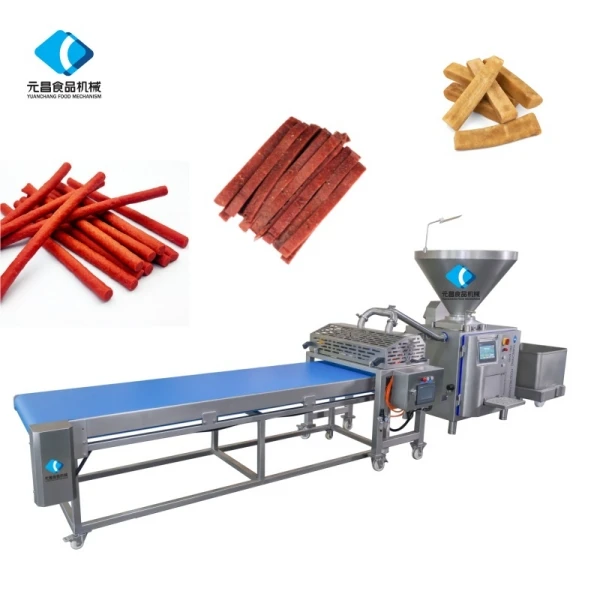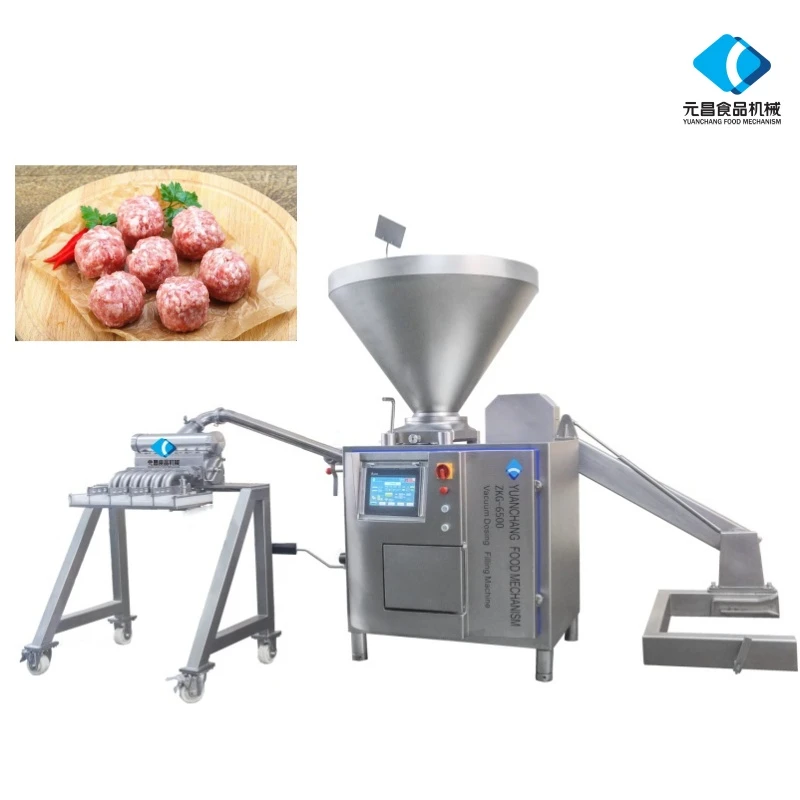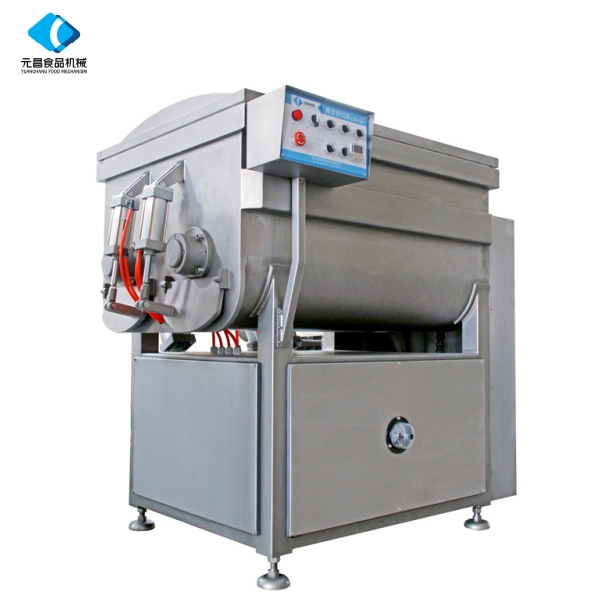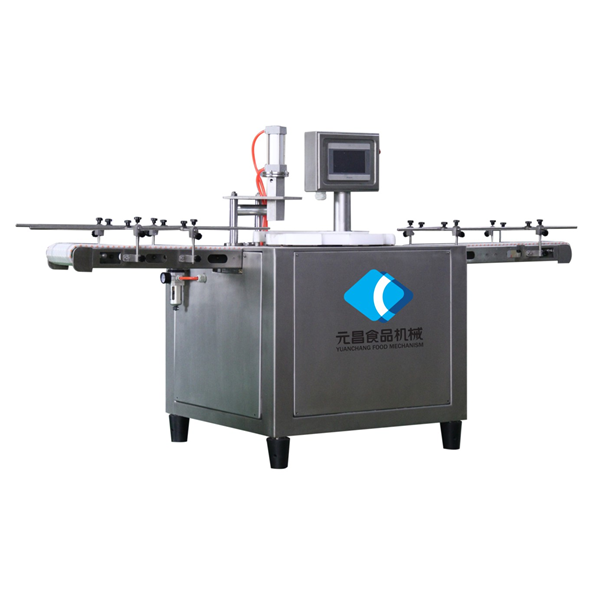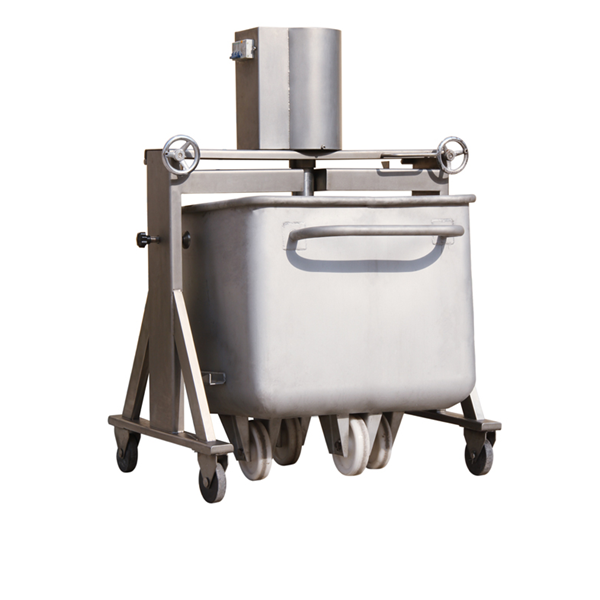Sausage Mixing Machine: Efficient, Hygienic Processing Equipment for Modern Meat Production
The Growing Importance of Sausage Mixing Machines Worldwide
There’s something quietly fascinating about how a sausage mixing machine works. On the surface, it’s a very straightforward concept: blending meat, spices, and other ingredients to create a uniform sausage mixture. But when you zoom out to the global scale, its importance becomes clearer—especially in the food processing industry, where efficiency, hygiene, and quality are king.
Why does it matter? According to the UN’s Food and Agriculture Organization (FAO), the global meat processing sector is expected to grow steadily as populations increase and urbanize. Sausage products are a staple in many cultures, ranging from Europe to Asia to the Americas. A well-engineered sausage mixing machine can reduce manual labor, improve product consistency, and increase safety standards, which ultimately benefits producers and consumers alike.
Mini takeaway: Understanding sausage mixing machines is not just about machinery; it’s about feeding communities reliably, safely, and efficiently in a globalized food market.
Why Sausage Mixing Machines Are a Global Industry Staple
Take a look at the numbers: The meat processing equipment market was estimated at over USD $11 billion in 2022, with sausage-specific machinery representing a sizable slice. Globalization means meat products are shipped physically and culturally across borders. Yet, food safety regulations—like ISO 22000 and HACCP protocols—push manufacturers to seek reliable, hygienic mixing systems. Sausage mixing machines answer this demand by streamlining the blend process without compromising hygiene or texture.
The challenge? Many producers, especially in developing regions, still rely on outdated or manual mixing, risking contamination or inconsistent batches. Modern sausage mixing machines help bridge this gap, offering scalable solutions for different production volumes.
What Exactly Is a Sausage Mixing Machine?
In its essence, a sausage mixing machine is a mechanical device engineered to blend various sausage ingredients uniformly — meat, fat, spices, curing agents, and even fillers. These machines vary widely: from small semi-automatic mixers used by artisan butchers, to large-scale automated mixing lines in industrial plants.
It’s not just about mixing, either. The machine’s design ensures the ideal temperature is maintained to keep the meat fresh and parts don’t overheat, which could affect quality or safety. In the humanitarian context, such machines enable efficient protein processing in remote or resource-scarce environments, helping deliver nutrition safely.
Core Components & Key Factors to Consider
1. Durability & Build Quality
Meat processing isn’t a gentle business. The machine needs to endure constant grinding, mixing, and cleaning cycles. Most sausage mixers are constructed with stainless steel to prevent corrosion and withstand acidic spices and moisture. Oddly enough, longevity is one of the least glamorous yet vital factors—machines that crack or rust prematurely can cost far more in downtime than a pricier upfront model.
2. Mixing Capacity
From a few kilograms per batch to several tons per hour, capacity defines the scale of production. Smaller businesses might choose 50–100 kg mixers, while industrial processors require 1000+ kg. Flexibility is a bonus: some machines offer modular setups enabling batch size adjustments based on demand.
3. Automation & Control
The level of automation can range from manual motor-start mixers to PLC-controlled systems with programmable mixing cycles and temperatures. Many engineers I spoke with emphasized that automation improves repeatability and reduces operator error—a huge plus in food safety.
4. Hygienic Design & Ease of Cleaning
Cleaning is paramount. Residues can harbor bacteria. Machines often feature hygienic seals, easy-to-disassemble parts, and CIP (clean-in-place) options. This area is heavily influenced by regulatory compliance, especially in export markets.
5. Energy Efficiency
Energy consumption might seem secondary but is a major operational cost at scale. Recent models focus on reducing power use while maintaining output, responding to both environmental concerns and business bottom lines.
| Specification | Typical Range | Remarks |
|---|---|---|
| Capacity | 50 kg – 2000 kg | Batch size varies by model |
| Power Consumption | 1.5 – 12 kW | Efficiency depends on automation |
| Material | Stainless Steel (304/316) | Corrosion resistant |
| Automation Level | Manual to PLC-controlled | Depends on model |
| Cleaning | Manual / CIP | CIP reduces downtime |
Where and How Are Sausage Mixing Machines Used Around the World?
From bustling factories in Germany and the U.S. Midwest to small-scale plants in Southeast Asia and Africa, these machines are everywhere. Their versatility enables use in artisan charcuterie shops, mid-sized manufacturers, and humanitarian projects aiming to improve nutrition.
For instance, in post-disaster relief efforts, mobile sausage mixing units have been deployed to process local meat surpluses into processed proteins quickly. Meanwhile, in developing nations like Vietnam or Brazil, improved machinery helps producers meet export standards, opening up economic opportunities.
Oddly enough, the industry also benefits emerging trends in sustainable food production, mixing plant-based ingredients alongside traditional proteins in novel ways, which the machines can handle with slight modifications.
Mini takeaway: The widespread application of sausage mixing machines underscores their role as both industrial workhorses and catalysts for social impact.
What Are the Real Advantages of Investing in a Sausage Mixing Machine?
- Improved Product Quality: Consistent mixing at precise ratios means better taste, texture, and shelf-life.
- Operational Efficiency: Faster processing, reduced labor costs, and minimized waste through precise control.
- Safety & Hygiene: Closed systems and sanitary designs limit contamination risks.
- Sustainability: Energy-efficient motors and cleaning systems reduce water, power, and chemical use.
- Market Access: Meeting regulatory standards enables exports and higher-value sales.
On an emotional level, workers’ safety improves, customers gain trust in product consistency, and companies can claim innovation leadership. I always find that sort of drawn-out benefit fascinating—it’s the little things you don’t notice until they’re gone.
Looking Ahead: What’s Next for Sausage Mixing Machines?
The future feels pretty exciting. Automation will deepen, with AI-driven quality checks and recipe adjustments becoming standard. Sustainability pushes will drive designs toward renewable energy compatibility—solar-powered meat plants, anyone?
Material science advancements promise lighter, stronger, and even antimicrobial components. Digital traceability will integrate directly with mixing cycles to guarantee batch provenance. Overall, sausage mixing machines will become smarter and greener, yet still fundamentally about making great food.
Common Challenges and How to Overcome Them
Of course, no tech is without hurdles. Initial costs can feel steep, particularly for small producers. Maintenance requires skilled technicians, and improper use can lead to contamination or machine breakdowns.
Solutions are emerging: modular leasing options allow access without full upfront investment; remote diagnostics minimize downtime; and training programs afloat from industry groups help close skills gaps. I guess it boils down to pairing the right machine with the right operator—which is often easier said than done.
FAQ: Your Sausage Mixing Machine Questions Answered
Q1: How do I choose the right capacity for my sausage mixing machine?
A1: Begin by estimating your average batch sizes and production frequency. Consider future growth. If you produce artisan sausages, a 50–100 kg batch size may suffice, whereas industrial processors require machines handling 1000+ kg batch size. Also, check if the machine offers modular expansion.
Q2: Are sausage mixing machines easy to clean?
A2: That depends on the model but modern machines prioritize hygiene. Look for stainless steel builds, CIP (clean-in-place) features, and easily removable parts. Regular cleaning is critical to maintain food safety and machine longevity.
Q3: Can I process plant-based sausage mixes on the same machine?
A3: Yes, many machines are versatile enough to mix plant proteins with minimal adjustments. Just ensure proper cleaning when switching between ingredients to avoid cross-contamination.
Q4: What energy sources power these machines?
A4: Most sausage mixers run on electricity (1.5–12 kW range), but emerging models explore integration with renewable energy sources or low-power designs for off-grid use.
Q5: How do I import a sausage mixing machine internationally?
A5: Work with reputable vendors who offer export documentation and support. Verify compliance with your country’s import regulations and potential certifications like ISO or CE marking.
Comparing Top Sausage Mixing Machine Vendors
| Vendor | Automation Level | Typical Capacity | Price Range | Global Reach |
|---|---|---|---|---|
| MeatTech Solutions | Semi-automatic | 100 – 500 kg | $15,000 – $40,000 | Europe, Asia |
| YCM Engineering | Fully Automated PLC | 500 – 2000 kg | $40,000 – $150,000 | Global |
| FreshBlend Inc. | Manual to Semi-Automatic | 50 – 300 kg | $10,000 – $35,000 | North America, Africa |
For businesses interested in taking the next step, I highly recommend exploring sausage mixing machine options tailored to your capacity and automation needs.
Conclusion: Sausage Mixing Machines as a Long-Term Investment
In real terms, a sausage mixing machine is more than just a tool — it’s a bridge to better product consistency, enhanced food safety, and improved operational margins. Whether you’re running a small butcher shop or a large food processing facility, investing wisely ensures you meet modern standards and consumer expectations.
For those ready to enhance their processing lines, visit our website: https://www.ycmeatmech.com to discover custom solutions that fit your unique needs.
Mini takeaway: A smart sausage mixing machine doesn’t just mix meat. It mixes innovation, efficiency, and quality into every bite.
References
-
Discover the Benefits of Vacuum Marinating Machines for Efficient Food ProcessingNewsNov.24,2025
-
The Ultimate Guide to Commercial Chicken Scalders: Efficiency, Sustainability & InnovationNewsNov.23,2025
-
Chicken Harvesting Equipment: Efficient & Humane Solutions for Poultry ProducersNewsNov.22,2025
-
Comprehensive Guide to Meat Processing Plant Equipment | Efficiency, Safety & SustainabilityNewsNov.21,2025
-
Meat Processing Bins: Durable Solutions for Safe & Efficient Meat Handling WorldwideNewsNov.20,2025
-
Best Commercial Marinating Machines for Meat Processing | Efficient & ScalableNewsNov.20,2025





